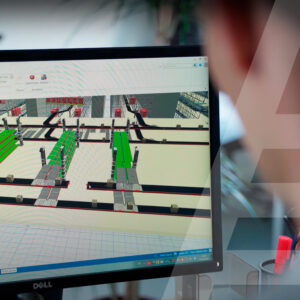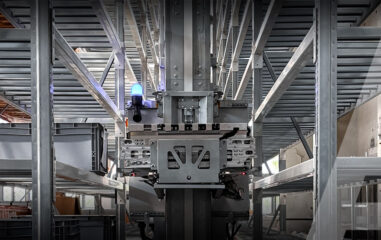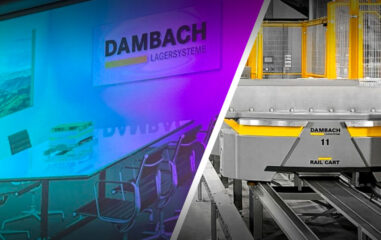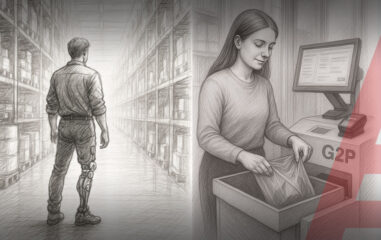The features of the automation of finished goods warehouses

Warehouse automation is taking place in many countries around the world.
Experience shows, that the speed and accuracy of goods dispatch has a direct impact on the competitiveness of a company of any size.
There are different types of warehouse classifications, but globally they are divided into manufacturing and retail warehouses. In the latter, finished products are assembled from orders to end consumers. As a result of the pandemic, the volume of e-commerce has skyrocketed. Therefore, in 2021 Ukraine planned to offer retailers more than 360 thousand m2 of new logistics terminals. At the end of 2021 a new offer on the warehouse market in Kiev totaled 110 thousand m2.
As for production warehouses, they are divided into warehouses for storing raw materials and finished goods warehouses. Developing industrial enterprises actively automate the movement between warehouses and production with the help of robotic conveyor systems. There are a number of peculiarities in the approach to automating such enterprises.
5 features of the finished goods warehouse

The main characteristics of a modern warehouse of finished products:
- Significant volume of shipments. Workers in 90% of cases do not send products to consumers by the piece, but form orders with mono- or mix-pallets.
- Small assortment of products. Usually a company has 100-200 products, even if it is a pharmaceutical plant. And the company, which produces, for example, mineral water and beverages, can have up to 10-20 articles of finished products.
- Pallet storage of goods. The finished products are folded into pallets and are delivered to the warehouse from the production zone.
- Significant stock of articles. The company has a limited assortment, but has a large number of pallets of each article.
- Adherence to the FIFO rule. It ensures the correct product rotation: products with a shorter shelf life must be shipped first. Leftovers with a shorter shelf life should not pile up.
Taking all these, the our team creates individual storage systems for companies in various industries. During the development of each project, a large amount of information provided by the customer is processed. In these projects, it is very important to take into account all of the specific logistics processes of a particular production facility.
How to choose the type of racking for palletized goods storage?
In finished goods warehouses, there is mainly pallet storage of goods stocks, so the channels (cells) for articles can be made deep. However, it depends on the specific needs of the customer. For example, one plant may store 10 items on 30 pallets, while another may store 100 articles on 2-3 pallets. The design depth of the channels and their number depends on this.
We can offer the following types of pallet storage racks:
- Frontal racks. FIFO rule is fulfilled by selecting goods from a certain cell. This method is convenient for organizing pallet and box shipment of products. The cost of implementing such a project is as affordable as possible.
- Gravity racks. Convenient automatic FIFO rule, because new goods are loaded on one side, and the other side is shipped to customers who were already there. All products are moved evenly – depending on the shipment.
- Automatic shelving. Goods are installed and removed with the help of stacker cranes. Manual labor is not used, the number of workers is a minimum.
The organization of the front racks has significant disadvantages: requires a lot of equipment and staff to service the warehouse. In addition, a lot of useful space is lost for the passage of stackers. Therefore, this principle of pallet storage is suitable for warehouses with a small number of orders and, accordingly, non-intensive cargo flow.

On average, gravitational and automatic racks are 5 times more expensive than shelf and pallet racks, but they allow to use the maximum area of storage facilities and land. Pallet racks require machinery and personnel for maintenance and have a height limit of up to 12 m. At the same time automated high racking warehouses with pallet ASRS guarantees optimum space utilization, direct and fast access and safe storage up to a height of 40 m.
The finished goods warehouse handles mainly pallet loads, so it is sensible to automate::

- Pick and place areas into storage locations. Special software makes it possible to sort the goods faster by means of barcodes.
- Then the selection of boxes of the required products, stacking boxes on the mix pallet, palletizing with stretch film, marking with a shipping label and moving the finished pallets to the point of shipment takes place.
- Pallets are automatically moved to the sorting area by conveyor. Then they are transferred to a shuttle system, from which they are automatically loaded into gravity accumulators in front of the docks for a particular customer or delivery route.
- If greater moving capacity is needed or if pallet conveyors interfere with the movement of warehouse forklifts, mobile pallet AGV machines are used to move pallets between zones.
All this together minimizes the use of trucks and human labor. In the warehouse it is possible to achieve high throughput without unnecessary errors. After all, the human factor has never been eliminated: when processing a large number of items per day, it is easy for an employee to make a mistake due to fatigue and reduced concentration.
Robotic systems are able to work consistently and faithfully around the clock. The process of warehouse automation allows optimizing the number of production personnel and time of processing orders, reducing the operating costs of the enterprise, and improving the quality of the logistics complex.
Examples of automation of warehouses by our team

Our engineers developed a comprehensive solution for the automation of the production warehouse, delivered, installed and adjusted all the equipment. Since 2019 in a single system effectively work:
- a 10-carriage elevator to vertically move a large number of crates up to 15 m in a continuous flow;
- driven roller conveyors by Kapelou® ;
- Warehouse Control System (WCS) software.
All of this made it possible to automatically handle a throughput of 950 crates per hour.
Using our conveyors, the system automatically feeds them to the elevator. Up to 50 kg of goods are gently moved from different tiers at the same time. Our engineers found an efficient solution to the technical task of continuously feeding the packaging line with products from all three storage levels. This reduced the burden on the company’s employees and lowered warehouse costs.
Several projects are currently underway to set up fully automated warehouses for storage of goods. Loading and retrieving finished products in such a warehouse is done with the help of stacker cranes. They will be erected in Ukraine at the largest enterprises producing sausages and beverages.
Automation of the warehouse of international holding ERC Distribution from KAPELOU
Our specialists in Kyiv automated the warehouse of 2000 m2 of international holding ERC Distribution (head office is in Austria). Since 1995 this corporation sells computer and household appliances, TV sets, products for gaming, toys for children of famous international brands in Ukraine and CIS.
Products in the ERC logistics center are now stored on wooden pallets placed on gravity racks. The modular drive roller conveyors by Kapelou® operate horizontally throughout the warehouse. Three high-speed vertical conveyors also were installed to move goods to any level of the platform.
In total, during 8 years our company has installed automated robotic conveyor systems by Kapelou® in hundreds of Ukrainian and European logistics centers. We are recognized leaders in the domestic market and successfully compete with European manufacturers in terms of quality equipment and progressive engineering solutions.
3D visualization helps to understand today how your warehouse will work tomorrow

Depending on these factors and on the basis of many years of experience, our specialists select the optimal equipment. 2D and 3D designs of ready-made solutions are always developed. It is not just a question of drawings, but of a warehouse functioning in real time. Visualization allows the customer to understand why exactly these conveyors, shelving and robotic systems are proposed by our engineers. The customer sees how his warehouse will work and, if it is necessary, can make adjustments to the project even before the installation and construction work begins.
Large corporations have long been taking advantage of the benefits of automating warehouse turnover in a short period of time. Gradually, all manufacturers and retailers will become convinced of the necessity of automating their finished goods warehouses. Meanwhile, our experts, who know the peculiarities of automation of such warehouses, have implemented a lot of similar projects. You can find the list of our projects in more detail in the “Our Projects” section.

Today, warehouse efficiency is measured in seconds, not hours. Modern warehouses are no longer just spaces packed with racks – they’re dynami...

On August 19-20, 2025, our engineering team completed training at Dambach Lagersysteme (Germany), a manufacturer of storage and retrieval equipment...

In recent years, the warehouse has evolved far beyond being just a place to store goods. It is now a dynamic, technology-driven environment –...
 Close
Close
 Back
Back


 Close
Close




